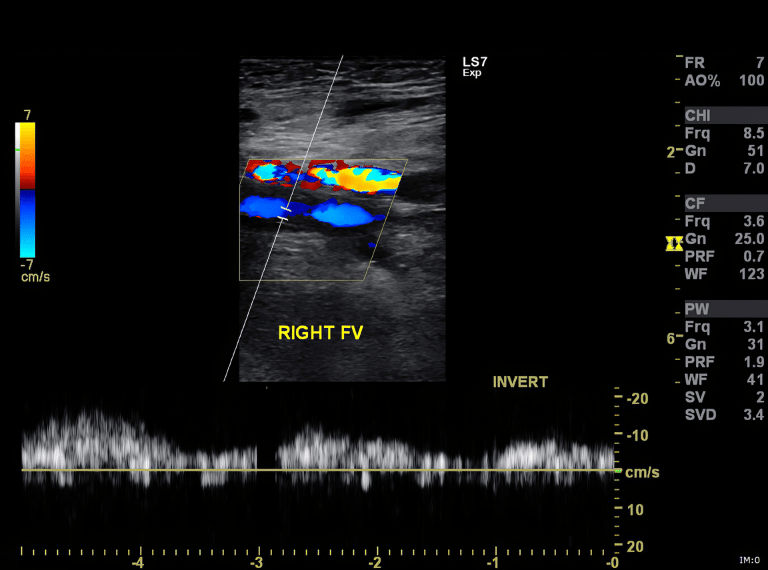Overview
A Doppler ultrasound uses sound waves to create images of how a person’s blood is flowing through their veins and arteries. The goal is often to check blood flow through the arms and legs. During a Doppler ultrasound, a handheld device emits sound waves that bounce off moving objects, such as blood cells. The reflected sound waves create an image of the way the blood is flowing.
The Anuradha Sono Scan centre is one of the Color Doppler Scan in Ghatkopar East. The Anuradha Sono Scan centre is committed to offering accurate results using the latest technology. The team of experienced sonographers deliver a safe and comfortable experience to all patients. The centre uses the latest technology to provide accurate results and offers a comfortable experience to all patients. The team at the centre are experienced sonographers who use the latest technology available to them.
The centre is equipped with the latest ultrasound machines that provide clear images and accurate results. The sonographers at the centre are highly trained and have years of experience in delivering accurate results. .
The centre also has a well-equipped laboratory where patients can get their reports within minutes. The Anuradha Sono Scan centre is committed to providing the best possible care to its patients and offers a wide range of services at affordable prices.
Whether you are coming in for your first ultrasound or you are a returning patient, we will provide you with the highest quality of care with Color Doppler Scan in Ghatkopar West. Contact us today to schedule an appointment.
A Doppler ultrasound is a noninvasive test that can be used to estimate the blood flow through your blood vessels by bouncing high-frequency sound waves (ultrasound) off circulating red blood cells. A regular ultrasound uses sound waves to produce images, but can’t show blood flow.
A Doppler ultrasound may help diagnose many conditions, including:
- Blood clots
- Poorly functioning valves in your leg veins, which can cause blood or other fluids to pool in your legs (venous insufficiency)
- Heart valve defects and congenital heart disease
- A blocked artery (arterial occlusion)
- Decreased blood circulation into your legs (peripheral artery disease)
- Bulging arteries (aneurysms)
- Narrowing of an artery, such as in your neck (carotid artery stenosis)
A Doppler ultrasound can estimate how fast blood flows by measuring the rate of change in its pitch (frequency). During a Doppler ultrasound, a technician trained in ultrasound imaging (sonographer) presses a small hand-held device (transducer), about the size of a bar of soap, against your skin over the area of your body being examined, moving from one area to another as necessary.
This test may be done as an alternative to more-invasive procedures, such as angiography, which involves injecting dye into the blood vessels so that they show up clearly on X-ray images.
A Doppler ultrasound test may also help to check for injuries to your arteries or to monitor certain treatments to your veins and arteries.
Doppler Ultrasound
Doppler ultrasound tests are used to help health care providers find out if you have a condition that is reducing or blocking your blood flow. It may also be used to help diagnose certain heart diseases. The test is most often used to:
- Check heart function. It is often done along with an electrocardiogram, a test that measures electrical signals in the heart.
- Look for blockages in blood flow. Blocked blood flow in the legs can cause a condition called deep vein thrombosis (DVT).
- Check for blood vessel damage and for defects in the structure of the heart.
- Look for narrowing of blood vessels. Narrowed arteries in arms and legs can mean you have condition called peripheral arterial disease (PAD). Narrowing of arteries in the neck can mean you have a condition called carotid artery stenosis.
- Monitor blood flow after surgery.
- Check for normal blood flow in a pregnant woman and her unborn baby.
- Check blood flow in your veins, arteries, and heart
- Look for narrowed or blocked arteries
- See how blood flows after treatment
- Look for bulging in an artery which is called an aneurysm
- Blood flow problems with your liver, kidneys, pancreas, or spleen
- Abdominal aortic aneurysm
During Doppler Ultrasound
During Doppler ultrasound, a handheld device is passed lightly over the skin above a blood vessel. The device is called a transducer. It sends and receives sound waves that are amplified through a microphone. The sound waves bounce off solid objects, including blood cells. The movement of blood cells causes a change in the pitch of the reflected sound waves. This is called the Doppler effect. If there is no blood flow, the pitch does not change.
Information from the reflected sound waves can be used to make graphs or pictures that show the flow of blood through the blood vessels. These graphs or pictures can be saved and reviewed later.


